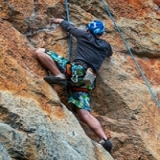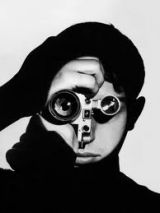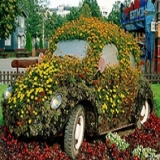- Forum
- General Discussion | Introductions | Off Topic Forum
- Photography General Discussion
- Cutting down light with out using ND filters?
Cutting down light with out using ND filters?
-
 Topic Author
Topic Author
- Dave Worton
- Has the Hang of it
-
- Nikon D800
- Followers: 59
- Posts: 72
-
Points:
992
Post #419560
My question -
I'm trying to take a portrait with 50mm f/1.4 and using Octobox with strobe. My goal is to take the photo with the lens wide open at f/1.4 The problem here is things are completely blown out. I have my strobes on the lowest power setting and are using just a a little fill light. Aside from having to buy some ND filters, is there any way around this?
-

- garyrhook
- Oh Wise One
-
- Nikon D850, Nikon D750, Panasonic G7K
- Followers: 912
- Posts: 11103
-
Points:
67681
Post #419579
1) shutter speed
2) aperture
3) ISO
4) external stuff like strobes and ND filters
If your ISO setting is at its minimum, your only other choice is shutter speed. And with a strobe you should not be limited to 1/200s, assuming you are not trying to use TTL.
Suggest: in manual mode, ISO 100 and f/1.4, get a good shot by shortening your shutter speed until you are in the right range. Then add the fill light back in (again, non-TTL... you want to learn to do this manually anyway). If you are only adding a bit of fill light you should not need to change your settings from whatever works without the flash.
If, however, you are in auto mode, well, then it's no wonder. The camera doesn't know you're triggering a flash. Your options include exposure compensation, but for me it's just easier to learn to work in manual mode. That way you can dial in everything the way you want it.
-

- hghlndr6
- Master of the Lens
- Nikon: P510, D600, D7100
- Followers: 1222
- Posts: 1650
-
Points:
28119
Post #419588
5) distance from light source to subject.
Since you are providing the light, you have total control. Light intensity falls off with distance not linearly but by a factor of the distance squared. That gives you a lot of flexibility ... double the distance and you've cut the intensity by 4X. You could also turn your lights around and bounce them off something.
-

- Robert Chen
- Photography Hooked
-
- Nikon D300
- Followers: 194
- Posts: 794
-
Points:
5860
Post #419666
Nikon D300 24-70mm f2.8
70-200mm f2.8
50mm f1.4 & 50mm f1.8
105mm f2.8
2 SB800
-

- Joe Peterson
- Snapobsessed
-
- Canon 5D Mark II
- Followers: 138
- Posts: 398
-
Points:
5479
Post #419695
Geospiri wrote: sorry jumped in too soon also grab a white sheet I assume that you're using soft box or such and drape the sheet over themto kill some more light.
Just a question why are you restricted to the wide open stop?
I don't know what the OP has in mind, but wouldn't you shoot wide open for one reason only: Super shallow DOF?
Post #419702
Joe Peterson wrote:
Geospiri wrote: sorry jumped in too soon also grab a white sheet I assume that you're using soft box or such and drape the sheet over themto kill some more light.
Just a question why are you restricted to the wide open stop?
I don't know what the OP has in mind, but wouldn't you shoot wide open for one reason only: Super shallow DOF?
Yes that is true. But the OP has not given us an idea of what they are actually shooting. Also DoF is affected by distance as well. If you move far enough from a subject then DoF effects become less detectable. Part of the problem with giving advice here on the forum is most of the time questions are pretty generic. So you give the best advice on what is common practice to do things.
-

- hghlndr6
- Master of the Lens
- Nikon: P510, D600, D7100
- Followers: 1222
- Posts: 1650
-
Points:
28119
Post #419712
Joves wrote:
Joe Peterson wrote:
Geospiri wrote: sorry jumped in too soon also grab a white sheet I assume that you're using soft box or such and drape the sheet over themto kill some more light.
Just a question why are you restricted to the wide open stop?
I don't know what the OP has in mind, but wouldn't you shoot wide open for one reason only: Super shallow DOF?
Yes that is true. But the OP has not given us an idea of what they are actually shooting. Also DoF is affected by distance as well. If you move far enough from a subject then DoF effects become less detectable. Part of the problem with giving advice here on the forum is most of the time questions are pretty generic. So you give the best advice on what is common practice to do things.
Well, the OP gave us some clues. He's shooting a portrait. With a 50mm lens ... which, depending on camera, would make the working distance very short for a typical portrait. He refers to strobes (plural) ... which suggests the lights are off-camera ...which is what prompted my suggestion to put more distance between lights and subject.
I have no idea why he's shooting wide open, though. A typical portrait working distance with a 50mm is going to give you a very thin DOF.
-

- garyrhook
- Oh Wise One
-
- Nikon D850, Nikon D750, Panasonic G7K
- Followers: 912
- Posts: 11103
-
Points:
67681
Post #419714
hghlndr6 wrote: I have no idea why he's shooting wide open, though. A typical portrait working distance with a 50mm is going to give you a very thin DOF.
Hm. You say that like it's a bad thing? Says the fan of shallow DoF.
The downside of moving the light sources away is that it results in harder shadows. Double-edged sword and all that.
I really think the OP is using off-camera flash in a non-manual mode and must learn to compensate.
-

- hghlndr6
- Master of the Lens
- Nikon: P510, D600, D7100
- Followers: 1222
- Posts: 1650
-
Points:
28119
Post #419720
garyrhook wrote: Hm. You say that like it's a bad thing? Says the fan of shallow DoF.
LOL. No, not a bad thing at all. But ... see my avatar/selfie. That was shot with a 50mm on full-frame with a working distance ~4 ft. At f/4, DOF was a little over 4 inches. Shot at 1.4, maybe I'd get an eye, or a beard, but not both.
-

- Greg Friedman
- Photography Hooked
-
- Nikon D610
- Followers: 138
- Posts: 508
-
Points:
6981
Post #424119
- Forum
- General Discussion | Introductions | Off Topic Forum
- Photography General Discussion
- Cutting down light with out using ND filters?
Latest Reviews
The Fujifilm XT5 is a 40MP mirrorless camera capable of 6.2K video at 30p. With those specs, it’s an ideal choice for photographers needing a camera to pull double duty for imaging and video.
The Canon EOS R100 is an entry-level mirrorless camera introduced in 2023. But just because it’s an entry-level camera doesn’t mean it’s a bare-bones camera. Find out why in this review!
Nikon’s retro-looking Nikon Zfc is anything but retro. Under its classic body is a host of features and amenities that make it a worthwhile compact mirrorless camera for 2024.
The Canon EOS R50 is one of the newest R-system cameras from Canon. Is it worth your money? Find out all the details you need to know in this comprehensive review.
Forum Top Posters
-
1TCav 7 posts
-
2Razky 4 posts
-
3Sawyer 3 posts
-
4Kenta 3 posts
-
5AstralArti... 3 posts
-
6CharleyL 3 posts
-
7Overread 3 posts
-
8Jason Stevens 3 posts
-
9Moe 3 posts
-
10Randy Shaw 3 posts
Latest Articles
To fill the frame means to expand the footprint of the subject in your shot. Get in close, zoom in, crop the image, or use other techniques to bring the subject to the forefront.
With these simple yet effective beginner photography tips, you can avoid some of the common mistakes beginners make and get improved results with your images.
Urban photography is a genre showcasing features in urban settings. You can photograph people, architecture, mass transit, and many other subjects. Learn how to do so in this guide!
The Nikon D850 might be an older DSLR, but it was ahead of its time when it debuted in 2017. That means it still has plenty of firepower to compete with today’s powerful mirrorless cameras.
The best beginner camera isn’t the same for everyone. That means having choice is of the utmost importance. In this guide, explore five excellent beginner camera options for 2024 and beyond.
Child portrait photography is a unique undertaking requiring special skills and talents to get the best results. Start mastering this photography niche with these essential tips!
The Fujifilm XT5 is a 40MP mirrorless camera capable of 6.2K video at 30p. With those specs, it’s an ideal choice for photographers needing a camera to pull double duty for imaging and video.
Using leading lines in photography helps improve the composition by drawing viewers in and leading their eye from the foreground to the background. Explore some fine examples of this in this guide!
















